Tasting (Legal) Underwater Wines
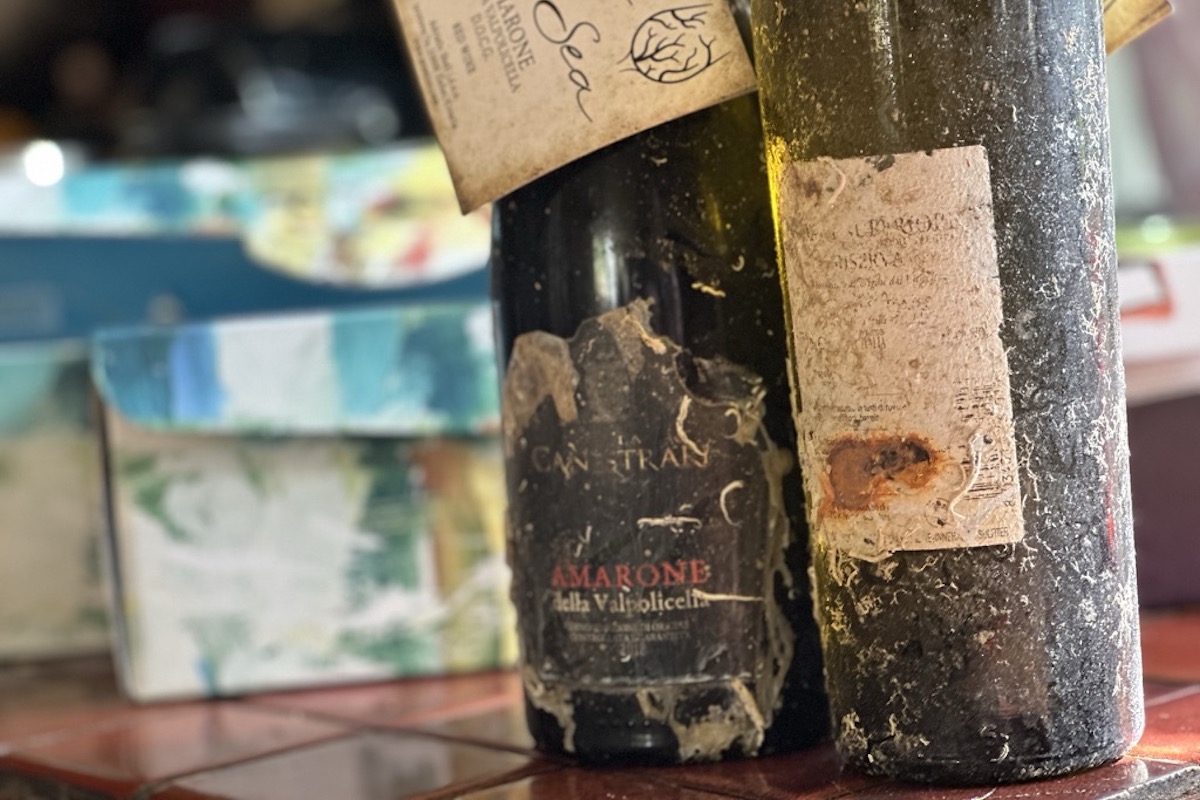
This edition of Full Belly Files was originally emailed to subscribers on November 3, 2023. To receive Matt Kettmann’s food newsletter in your inbox each Friday, sign up at independent.com/newsletters.
Aging bottles of wine underwater is a fast-growing global trend, as producers from Europe to South America explore how the colder temperatures, higher pressures, and more esoteric, perhaps even mystical impacts make for distinct, possibly better wines.
Santa Barbarans know the notion best from the Ocean Fathoms crew, whose ambitious albeit not-quite-legal project in the waters off of Montecito turned into a international news story. I reported the latest, potentially final, twists to their tale in this July 2023 article, but I’d also written about them here and helped with an L.A. Times report here.
So I was curious to learn that underwater wine aging is now being done in accordance with American laws, at least by one company operating in a slice of the Adriatic Sea off of Croatia. I was invited to taste a couple of those Wine of the Sea bottles last week, when the partnership between the Croatian outfit and a Wisconsin importer was explained to a healthy chunk of the American wine media during a Zoom session.
“For the last 10 years, it’s basically been illegal or impossible to get wines labeled for sale that’s been aged under the ocean,” explained Nick Wood, a weekly newspaper executive by career who became a partner at BZ Consortium, the Wisconsin importer of these wines.
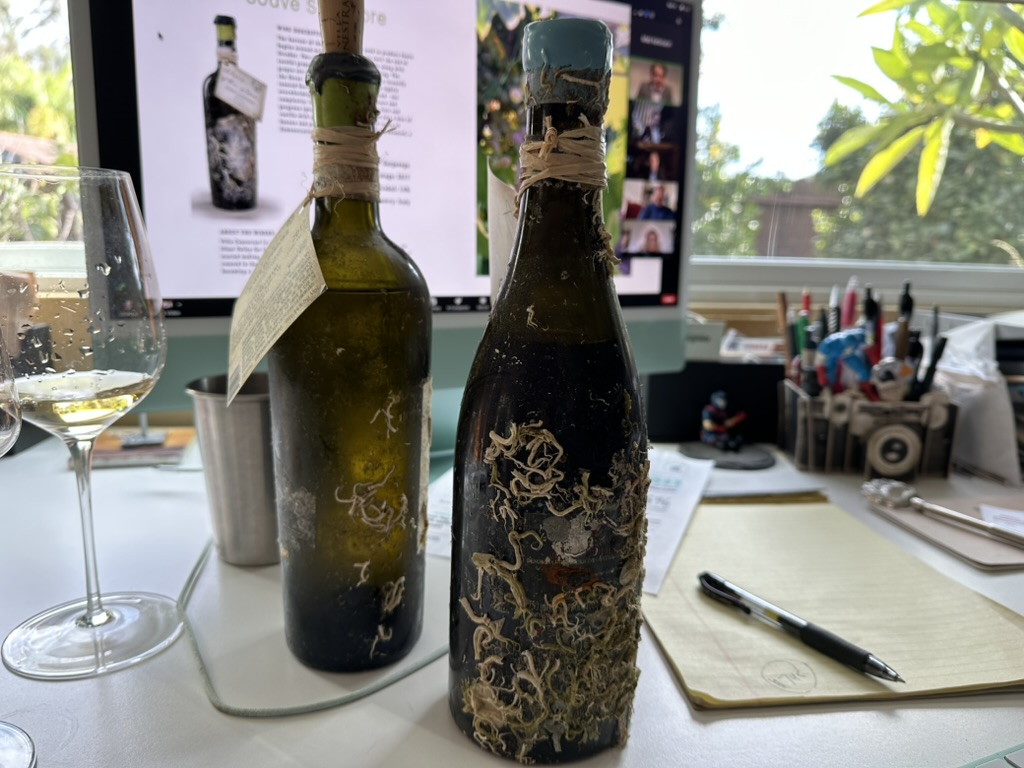
The FDA first cracked down in 2015 when a Napa Valley winery named Mira started aging wines underwater in the harbor of Charleston, South Carolina. But that hasn’t scared other countries around the world away from the idea, said Wood, explaining, “The United States is the only place where it’s not legal, basically.”
Right around the time that American rule-makers freaked out, Marko Dusevic was finishing the summer season at his oyster and mussel farm off the Croatian island of Pag. His Slovenian winemaker friend had brought a bunch of bottles that they didn’t quite finish, so Dusevic hid them in an oyster bag for the next summer.
“By accident, I start to put some wines in the sea,” Dusevic told us in his accented English. “It was not meant; it was not planned; it was by accident…. I forget about them. After a year, I come back and I found the bottles.” When he shared the coral-crusted bottles with his friend, the winemaker replied, “This wine is different.”
Since then, Dusevic and the team at their company Adriatic Shell have tested thousands of bottles using various closures, depths, and other variables. Though once reluctant to submit their bottles to the research, European wineries became more intrigued by the process, so that Adriatic Shell was able to try different types of wine, from more tannic styles to older vintages and so forth.
“I would say, by far, we have the most experience and knowledge in these things,” said Dusevic as to what sets his operation apart from others trying out the underwater technique.


A scene of the divers checking on a case of underwater wine, which comes with an unusual disclaimer. | Credit: Matt Kettmann
Meanwhile, he and the folks at BZ Consortium, who found out about Wine of the Sea (which is called Coral Wine in Europe) at a New York City trade show, began lobbying the FDA to change the law, presenting the mounting decade of research to show that the wines were safe. The FDA agreed in April 2022, allowing these wines to be imported, and the partnership has been ramping up production and distribution channels ever since. These wines are just now hitting the shelves of California stores, sold here through Park Street Imports.
The two wines provided for us to try were both made by Villa Canestrari, a fourth-generation family-owned winery in Verona, Italy. The red was a 2018 Amarone, made from slightly dried corvina, rondinella, and molinara grapes, and the white was a 2017 Soave Superiore, made from the garganega grape.
Both wines tasted delicious, proving utterly smooth and intensely layered. Of course, without comparing to an above-ground-aged control group, it’s impossible to say whether they’re much different or better than the originals.
The belief, at least by the Wine of the Sea crew and others promoting these wines, is that the process ages the wine a bit more quickly, bringing wines to peak maturation sooner than it would take to reach the same results in a cellar. Said Wine of the Sea’s brand ambassador Anthony Curko, referring to a Barolo that had undergone the cellar treatment, “I’m drinking the future now.”
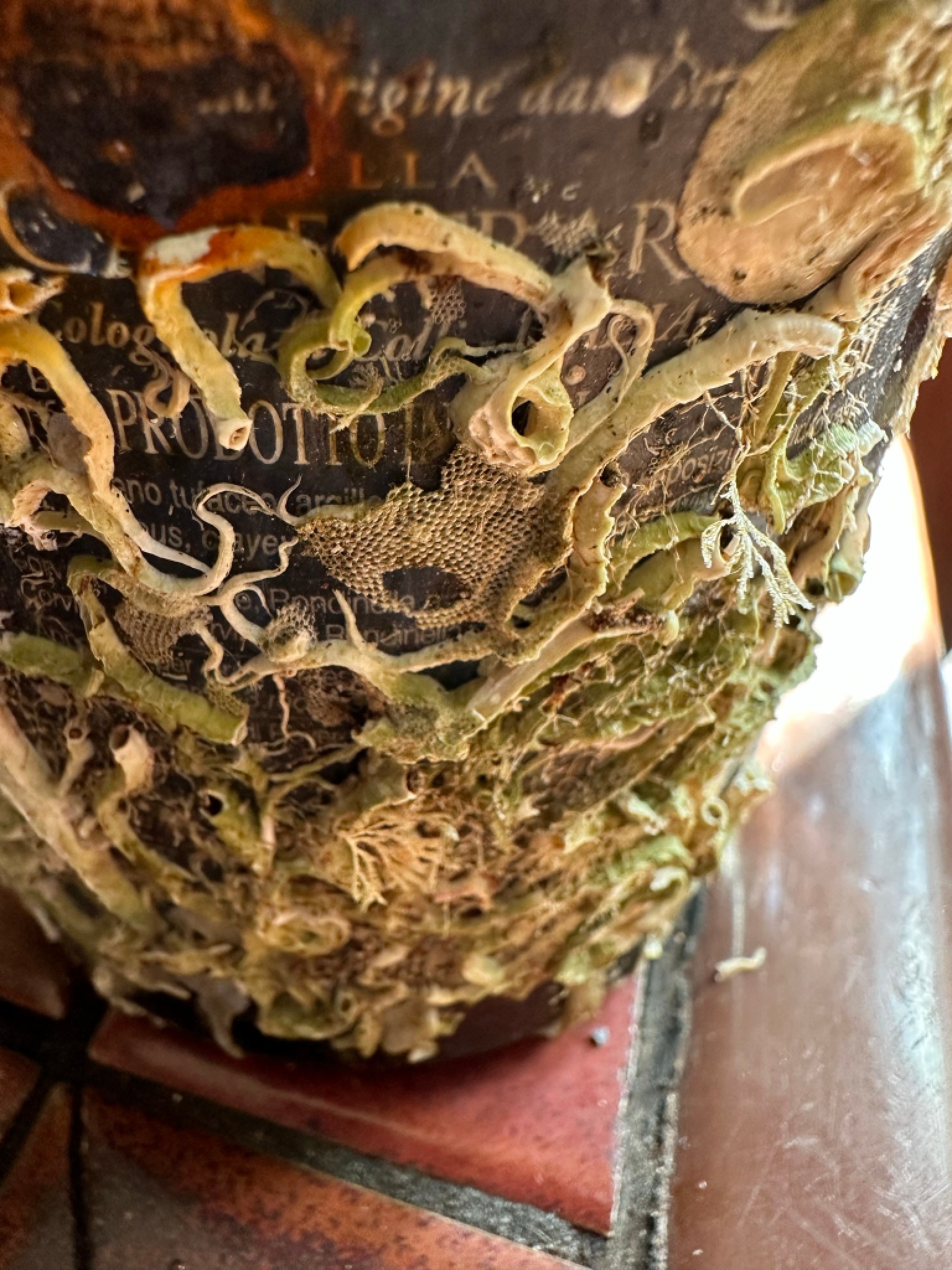
A couple of years ago, I was able to do a comparative tasting with the Ocean Fathoms wine, which is what that L.A. Times story was about. Those of us in attendance, which included a number of winemakers, agreed that the underwater wines were indeed distinct from their “normal” counterparts, showing a bit more integration of tannins and flavors. It wasn’t quite night and day, but it was subtly apparent to trained palates. Whether that’s “better” depends on everyone’s individual taste.
But I don’t really think that’s the point. No matter the vineyards, winemakers, legacies, or legends involved, selling wine in today’s world is primarily a marketing endeavor. When presented with so many options, consumers want a story to cling to, a tale that they can relay to their friends as they share that bottle of wine.
A bottle of wine aged underwater, with the coral and worm casings to prove it, and perhaps some unique flavors to discover? That’s about as compelling as marketing gets.
The prices are indeed much higher: The Amarone, which can be found for around $40 to $50 normally, is offered at $199; the Soave, which sells closer to $20 (what a deal, really), is being sold by Wine of the Sea for $159. Despite the discrepancies, sales of these bottles in rural Wisconsin — the first place they could be found in the United States — have been relatively brisk.
“We’ve got people coming from Minneapolis, Milwaukee, Las Vegas,” said Wood. “People are flying in to purchase the wine.” In just their small shop in Waupaca, Wood said that they’ve already sold more than 1,500 bottles, and the entire domestic inventory for the year is just 6,000 bottles. “It’s going fairly fast,” he said.
The trials of different styles of wine and underwater aging strategies have not stopped in Croatia either. “I’ve answered a lot of questions, but I am still learning,” said Dusevic.
For Adriatic Shell’s general manager Domogoj Skuliber, the Wine of the Sea project goes beyond the obvious questions. “[It’s] much more than just aging wine under the sea,” he said. “It’s admitting that we don’t know so many things about wine, and we’re trying to find out.”
My Next A2Z Dinner: Going Deep with Pisoni Vineyard
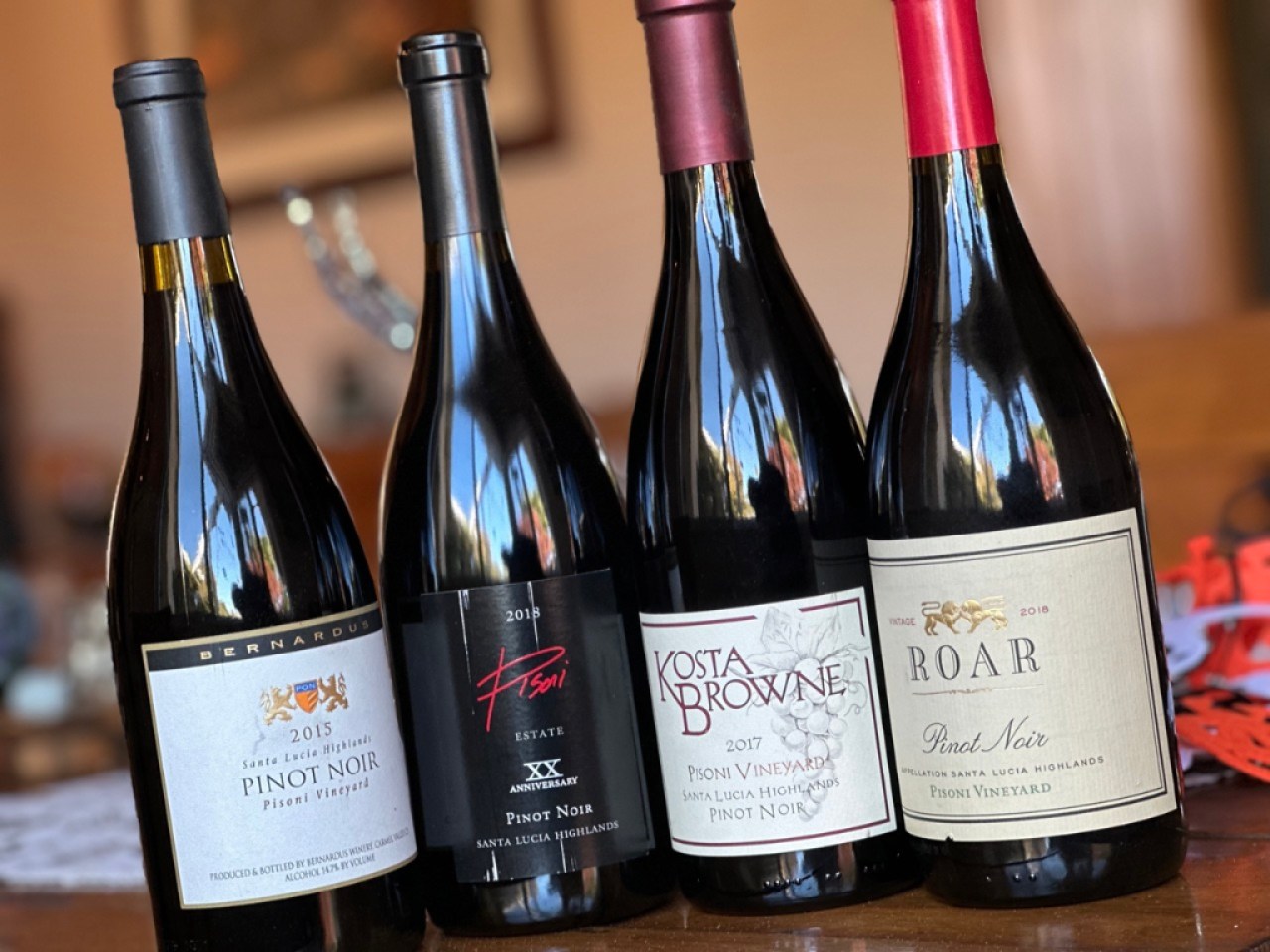
We now have two A2Z Cooking School x Kettmann Cellar Raid dinners under our belts: The September one focused on mostly Monterey wines, while last month’s was a showcase of crisp S.L.O. Coast and rich Paso Robles bottles.
For November, I’m gathering a case or so of different pinot noir bottlings from the Pisoni Vineyard, a shining star of California viticulture. First planted by Gary Pisoni back in 1982, supposedly from suitcase La Tâche cuttings, his eponymous vineyard is a primary reason that the Santa Lucia Highlands appellation exists in Monterey County. In addition to the Pisoni wines that the family makes from the site, the vineyard is a coveted source of pinot noir for such brands as Roar, Kosta Browne, and Bernardus.
The November 15 dinner will showcase a number of these bottlings and vintages. We still have a few seats left, but they’ll probably go fast once this news is out. So click here now for the $200 tickets, which benefit the nonprofit Apples to Zucchini Cooking School.
From Our Table
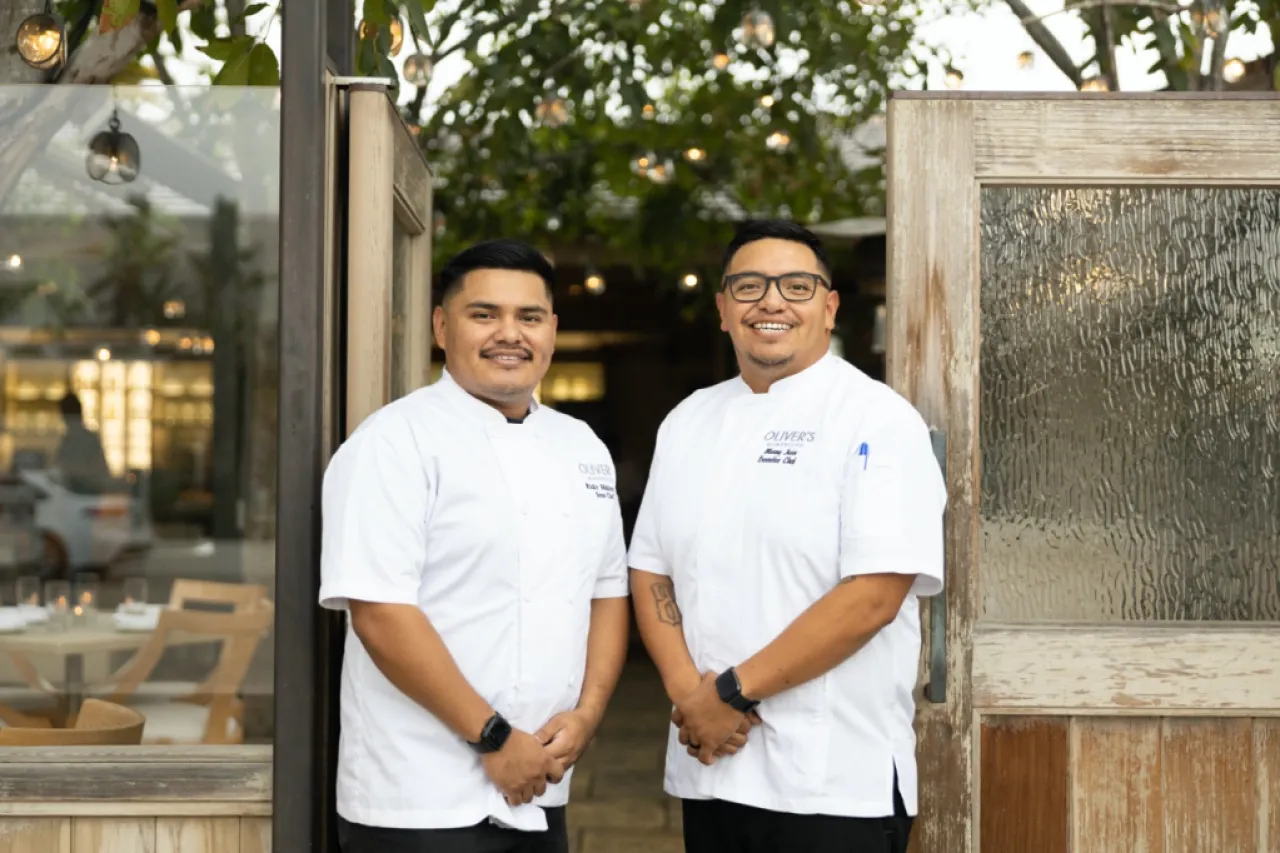
Here are some stories you may have missed:
- Leslie Dinaberg did her best British impression by sipping on tea at San Ysidro Ranch.
- Our art director Xavier Pereyra put down the mouse, picked up a pen, and wrote a profile of Chef Manny Juan at Oliver’s in Montecito.




You must be logged in to post a comment.